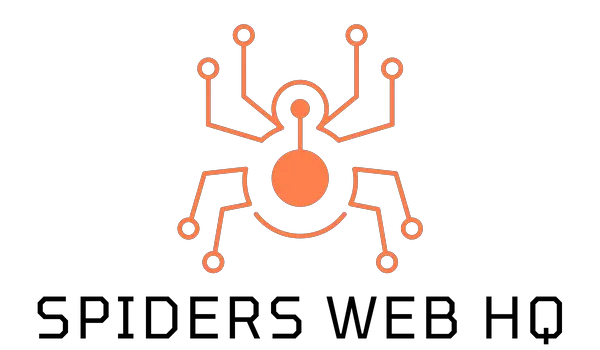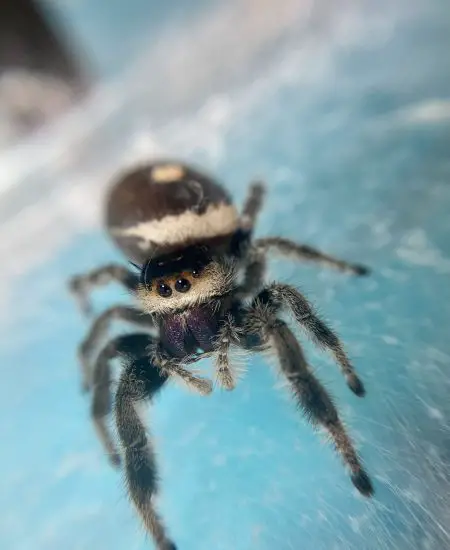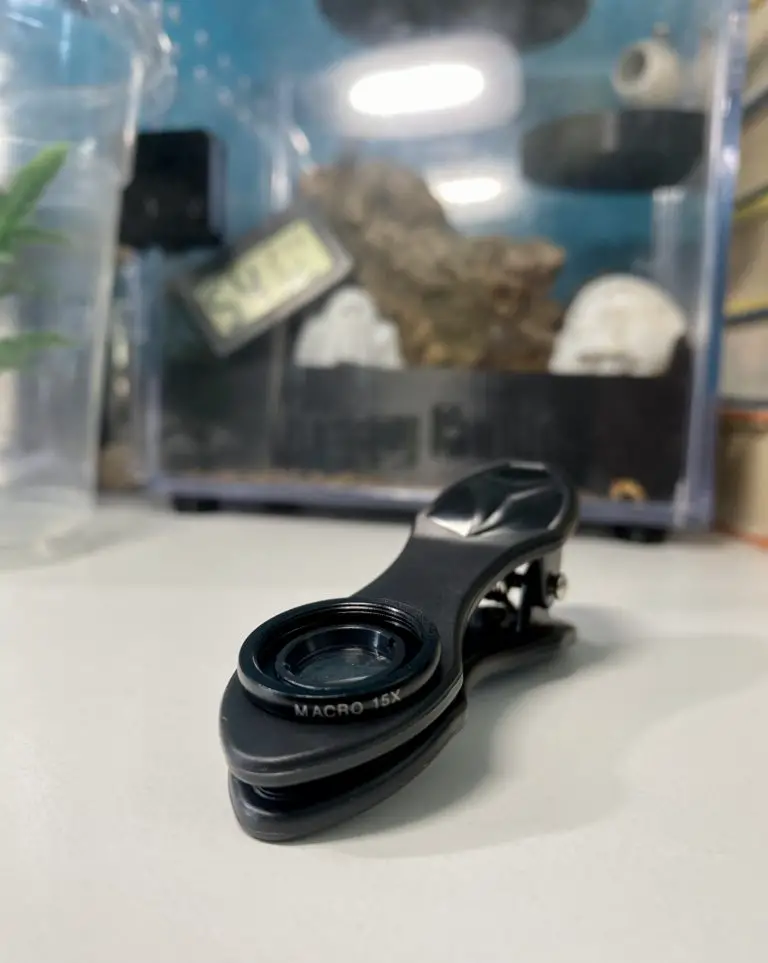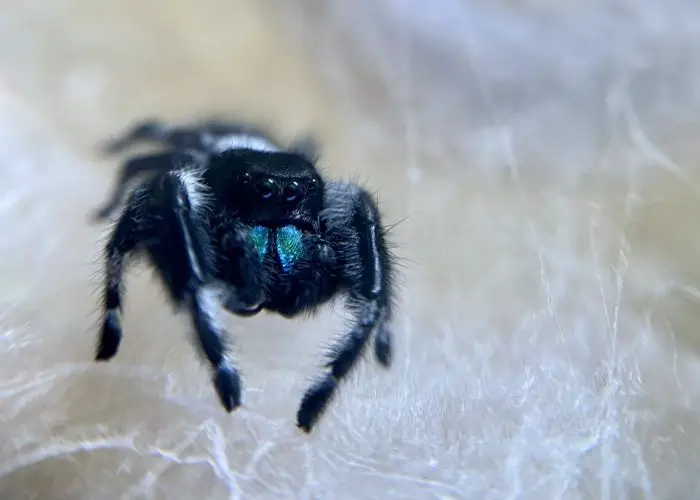Macro Photography: How to Take Photos of Your Pet Jumping Spider
With jumping spiders becoming such popular pets, it’s only natural that many people want to take pictures of their spidey-buddies.
Macro photography is a great way to document the behavior of your spider in high detail. Not only will you be able to see your spider’s features more clearly, but you’ll also be able to capture its personality and quirks.
Even though jumping spider macro photography can be a tricky task, the end results can be awe-inspiring.
What is Macro Photography?
Simply put, macro photography is a type of photography that involves taking close-up photos of small objects. The term “macro” comes from the Greek word for “large,” and macro photography allows you to capture images at life-size or larger.
Macro photography can be used to document the small details of your jumping spider’s anatomy, as well as its behavior. By getting close to your spider with a camera, you’ll be able to see things that you might not be able to see with the naked eye.
Taken correctly, a macro photograph can create a dramatic visualization of the subject, which will be jumping spiders in this case. In a lot of jumping spider photographs, the spider’s eyes are attention-grabbing.
One of the most well-known macro photographers is Thomas Shahan; he has specialized in taking high-magnification photos, and a lot of his subjects are jumping spiders or other small creatures. His work has even been featured in National Geographic.
How to Get Start with Macro Photography
The best way to get started with jumping spider macro photography is to start with a point-and-shoot camera and a macro lens. A macro lens will allow you to take close-up photos without getting too close to your subject. It is also one of the most essential pieces of macro photography equipment.
If you don’t have a macro lens and want to use your phone camera, you can purchase a macro lens attachment for your phone, like the one shown in the photo below. These attachments are typically less expensive than a macro lens for a point-and-shoot camera, and they’re easy to attach and remove.
Once you have your camera and lens, you’ll want to find a well-lit place to take your photos. Taking pictures in low light can make it difficult to get a clear image, so it’s best to find a spot near a window or another source of natural light.
You’ll also want to make sure that your spider is in a good mood before you start taking pictures. If you try to take pictures of a spider that’s feeling threatened, it’s likely to jump or run away.
Spiders are more likely to be relaxed if you provide them with a hiding spot, such as a small piece of bark or a plastic container. You can also try offering your spider a small insect to eat; find out more about feeding your jumping spider. Once your spider is relaxed, you can start taking pictures.
Tips for Taking Clear Photos of Your Pet Jumping Spider
Now that you have your camera and your spider is in a good mood, it’s time to start taking pictures. Here are a few tips to help you take great macro photographs of your jumping spider.
1. Use a Handheld Camera
When you’re taking close-up photographs, it’s best to use a handheld camera. A tripod can be helpful when you’re taking macro photographs, but it can also become a hassle when the jumping spider begins to move around.
By using a handheld camera, you’ll be able to follow your spider’s movements and take pictures quickly.
2. Select a Fast Shutter Speed
When you’re taking jumping spider macro photographs, it’s important to use a fast shutter speed. A slow shutter speed can cause your pictures to be blurry, especially if your spider is moving around.
A good rule to follow is using a shutter speed that’s equal to or faster than your focal length. For example, if you’re using a 100mm lens, you should use a shutter speed of 1/100 or faster.
3. Try Different Angles
To get the best pictures, it’s important to try different angles. Move around and take pictures from different perspectives.
You might also want to try taking pictures from above, below, or from the side. By changing your angle, you’ll be able to get a variety of different pictures. This can be useful if you have to identify the species of jumping spider later on, especially if you’re taking images of wild spiders.
4. Turn On the Flash
If you’re having trouble getting a clear picture, you might want to try turning on your camera’s flash. The flash can help to illuminate your spider, making it easier to take a clear picture.
5. Try Various Backgrounds
The background of your picture can have a big impact on the overall look of the photograph. To get the best results, you might want to try using a variety of different backgrounds.
You can use a solid color background, such as a piece of paper or fabric. You can also try using a more natural background, such as a plant or a piece of wood.
6. Get Some Action Shots
Jumping spiders are known for their ability to jump, so why not take some action shots? If your spider is feeling playful, you might be able to get some great pictures of it jumping or running around.
An extra tip for this is to allow your pet jumping spider to hunt during your photoshoot. This will give you the opportunity to shoot them stalking insects or eating flies, and these images can be a real hit online.
7. Focus On the Spider's Eyes
One of the most striking features of a jumping spider is its large eyes. This is often what gives these little spiders such a curious expression.
To get the best results, you’ll want to focus on your spider’s eyes when you’re taking pictures.
If you’re having trouble getting a clear picture of your spider’s eyes, you might want to try using a flash. The flash can help to illuminate your spider’s eyes, making them easier to see.
8. Be Patient
Jumping spider macro photography can be a bit of a waiting game. You might have to wait for your spider to move into the right position, or you might have to wait for it to calm down before you can take a picture.
The best thing you can do is be patient and wait for the perfect opportunity to take a picture. If you try to rush the process, you might end up with a blurry or low-quality picture.
You might also want to edit your photos, especially if you want to post them on social media or a jumping spider forum. There are plenty of tutorials on how to edit macro photographs to ensure you are happy with the final image.
What to Avoid When Taking Your Spider's Photo
Chances are you will have seen images of jumping spiders with water droplets on their head. Although this looks adorable, it is very dangerous to the spider. Due to their small size, jumping spiders can easily drown in the tiniest drops of water.
It is, therefore, important that you never spray your spider with water. Not only is this dangerous, but it will also stress your spider out, which is something you want to avoid.
If you want to get some water droplets in your photos, you can try using a spray bottle filled with distilled water. Spray the water onto a surface, such as a plant or a piece of paper, and then take your pictures.
This will help to keep your spider safe and stress-free.



